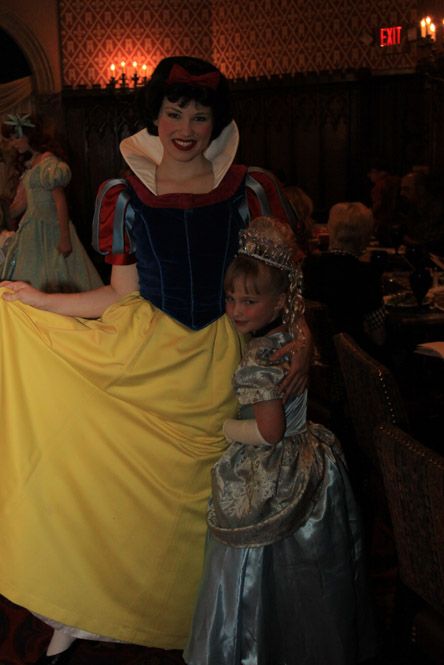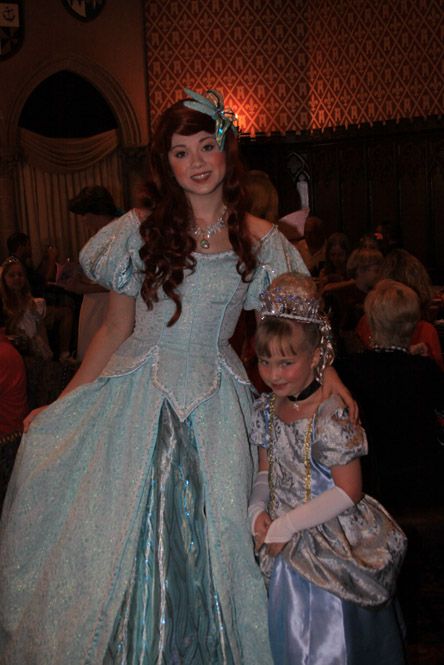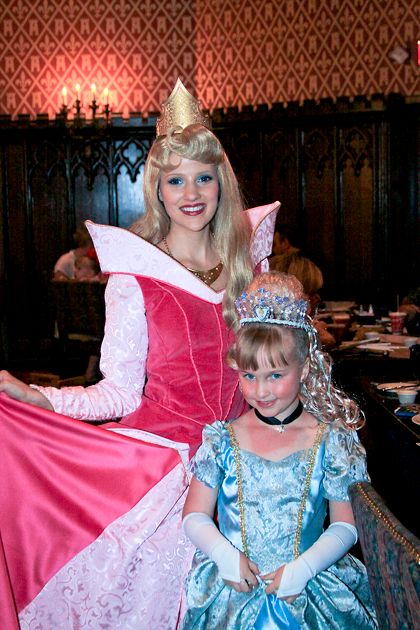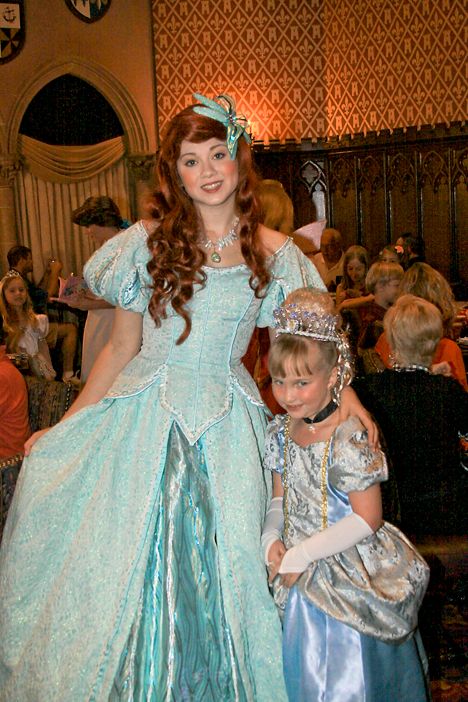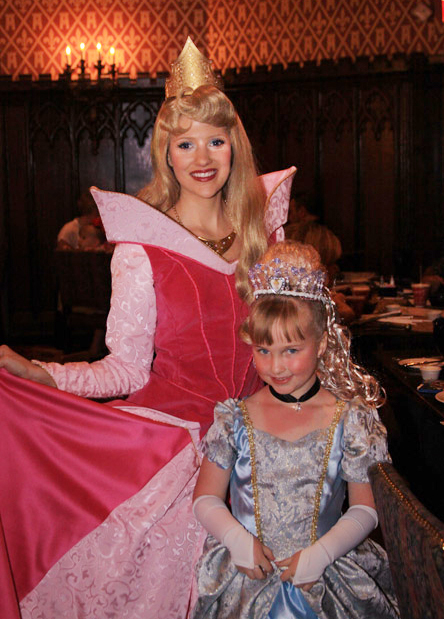Thanks for the info.
Now for the tricky places, like CRT. Thats where I used my flash this past trip.
The pics are horrid. The ceiling is too high to bounce off of. The pictures are just awful from there.
Also, I like to take pictures of my DD at her dance studio every so often. the ceiling is BLACK and two walls have mirrors. I have yet to figure out how to use the flash there. So I usually go with a high ISO, wide open aperture and no flash and get grainy pictures.
Let me see if I can find the disc with my CRT pictures and I'll post one.
Yes, those are pretty tricky places for flash photos.
For Cinderella's Royal Table (CRT), first, set your camera settings to the overall ambient light. Unfortunately, this will probably mean a
high ISO (minimum ISO 1600, perhaps ISO 3200?). For
aperture, you might start with a large aperture like f/2.8, but you'd run the risk of a narrow depth of field. If you can get away with a slightly smaller aperture (say, f/4 or f/5.6), I'd try that. I assume that you'll be taking pictures of people holding still & posing, so you can get away with a slower
shutter speed, like 1/60 sec. If you can, though, see if you can do a slightly faster shutter speed, like 1/100 or 1/125, to prevent minor motion blur.
Take the test shot inside CRT with these settings. Adjust as necessary. You can probably get away with slightly
underexposing the background (ie. use a smaller aperture (larger f-number), a faster shutter speed, or lower ISO). The reason you'd slightly underexpose the background is so that your foreground flash subject can "pop" out, leading your viewers' eyes toward the subject.
Then, add the external flash. You can keep the external flash on TTL mode (TTL is the flash's "Auto" mode). At high ISOs like ISO 1600 & 3200, you'll probably have to dial down the flash power so that your foreground flash subject doesn't get overexposed. On your flash, you'll probably have to dial down the
Flash Exposure Compensation (FEC) to about -1 or -2.
As you mentioned, the ceilings at CRT are way too high for ceiling bounce flash. However, if you're seated next to a wall (or window at night), you can try doing wall bounce flash, which would give you a nice, directional light, similar to off-camera flash. Otherwise, if you have no other choice, then just point the flash directly at your subject.
To practice these techniques before your next CRT visit, try going to a local restaurant with similar lighting (Red Robin? McDonald's?) or test it out at home with similar lighting conditions.
For the dance studio, I would guess that studios would frown upon using flash inside the studio, especially during practices or performances. Maybe you can use flash before or after class, with your daughter posing for you?
Otherwise, you're doing the right thing using high ISO and larger apertures (smaller f-numbers). What lens are you using for this? If you're using one of the large-aperture prime lenses (like 30mm f/1.4, 50mm f/1.4, 85mm f/1.8, etc), then you can try using lower ISOs for less-grainy photos.
You can also try noise-reducing software, like Noise Ninja or Neat Image or a bunch of others. If you use Lightroom, it actually does a pretty good job at reducing noise, too.
Hope that helps.
 And a basic technique is bouncing the flash (like off a wall or ceiling). That will really show the difference of an external flash versus the on-camera pop-up.
And a basic technique is bouncing the flash (like off a wall or ceiling). That will really show the difference of an external flash versus the on-camera pop-up.